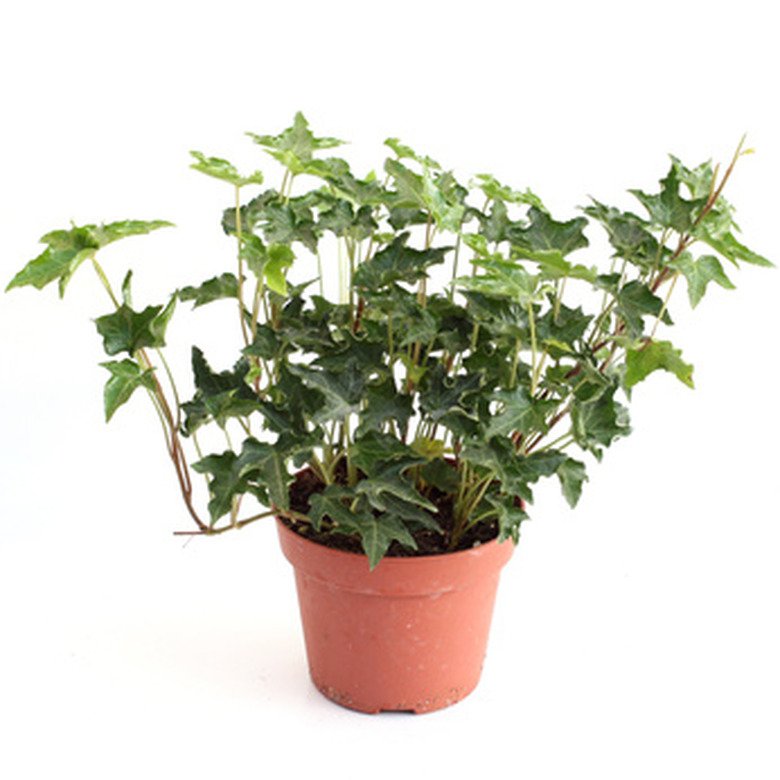How To Care For English Ivy Indoors
Whether your English ivy is cascading out of an indoor basket or being grown as a small topiary, caring for it properly ensures it continues to thrive in your home. English ivy is a relatively low-maintenance houseplant that requires minimal sunlight to thrive, making it suitable for north-facing rooms and other low-light areas. Use ivy anywhere in your home where you crave a touch of greenery but when you don't want to deal with a high-maintenance houseplant.
Step 1
Place the ivy container in an area that receives four to five hours of indirect, bright light a day from a window. A north or west window is usually sufficient, but be cautious of south and east facing windows as these may provide too much light. Alternately, place them near a fluorescent light source for 10 hours a day.
Step 2
Water the ivy when the top 2 to 3 inches of potting mix feels dry when you stick your finger into it. Water from the top until the excess moisture drains from the bottom of the pot. Avoid letting the mix dry out completely.
- Whether your English ivy is cascading out of an indoor basket or being grown as a small topiary, caring for it properly ensures it continues to thrive in your home.
- Place the ivy container in an area that receives four to five hours of indirect, bright light a day from a window.
Step 3
Fertilize Ivy every two months with a 20-20-20 analysis or other balanced fertilizer. Mix the soluble fertilizer with water according to label directions for the particular brand and water the ivy plant with the solution.
Step 4
Pinch the tips of the English ivy vines to limit their length and to encourage a fuller plant. Pinch off the top 1 inch of each vine. Pinch back further if necessary to regain control of an overgrown plant.
Step 5
Check ivy leaves for signs of mite or aphid infestation at least once a month as these insects are the most likely to affect indoor plants. Look for leaf discoloration or small insects on the underside of leaves. Treat with an insecticidal soap or a chemical control.
- Fertilize Ivy every two months with a 20-20-20 analysis or other balanced fertilizer.
- Pinch the tips of the English ivy vines to limit their length and to encourage a fuller plant.
Tip
Ivy rarely needs to be repotted, but if you do transplant it to a new pot for aesthetic reasons make sure you use a peat-based potting mix. Train the vines along a small trellis inserted into the pot to add vertical interest to the plant.
Warning
Too much sunlight or fertilization may lead to rapid growth of the plant, causing it to require more care and room.
Things Needed
- Fluorescent lights
- Fertilizer
- Insecticidal soap
